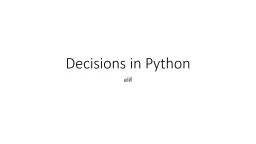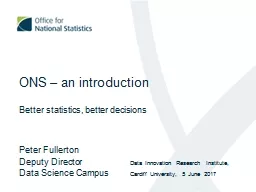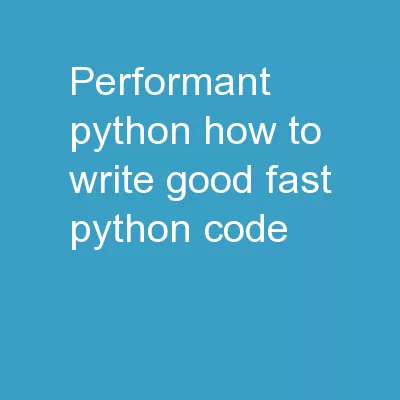PPT-Decisions in Python
Author : lindy-dunigan | Published Date : 2015-09-20
elif A new keyword elif A contraction of else if Used to tie two if statements or more together into one structure Syntax elif followed by a bool expression
Presentation Embed Code
Download Presentation
Download Presentation The PPT/PDF document "Decisions in Python" is the property of its rightful owner. Permission is granted to download and print the materials on this website for personal, non-commercial use only, and to display it on your personal computer provided you do not modify the materials and that you retain all copyright notices contained in the materials. By downloading content from our website, you accept the terms of this agreement.
Decisions in Python: Transcript
Download Rules Of Document
"Decisions in Python"The content belongs to its owner. You may download and print it for personal use, without modification, and keep all copyright notices. By downloading, you agree to these terms.
Related Documents









![[READING BOOK]-Illustrated Guide to Python 3 A Complete Walkthrough of Beginning Python](https://thumbs.docslides.com/970240/reading-book-illustrated-guide-to-python-3-a-complete-walkthrough-of-beginning-python-with-unique-illustrations-showing-how-python-really-works-now-covering-python-3-6-treading-on-python.jpg)
![[BEST]-Python: 3 Books in 1: Python Basics for Beginners + Python Automation Techniques](https://thumbs.docslides.com/974940/best-python-3-books-in-1-python-basics-for-beginners-python-automation-techniques-and-web-scraping-python-for-data-science-and-machine-learning.jpg)
![[FREE]-Programming 31: Python Programming In A Day Excel Shortcuts (Python Programming,](https://thumbs.docslides.com/988862/free-programming-31-python-programming-in-a-day-excel-shortcuts-python-programming-python-language-python-for-beginners-excel-programming-languages-excel-programming.jpg)

